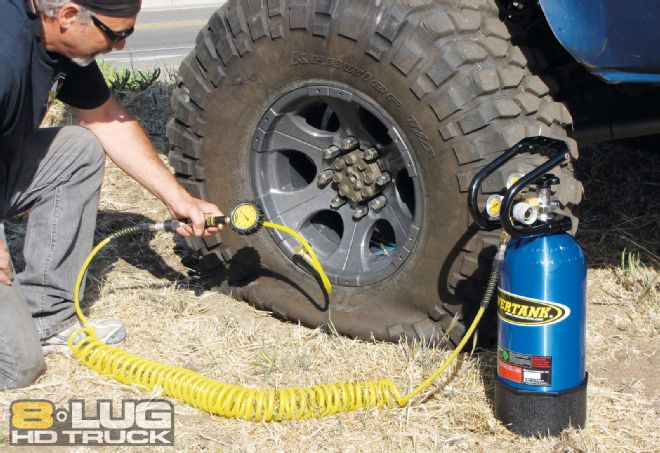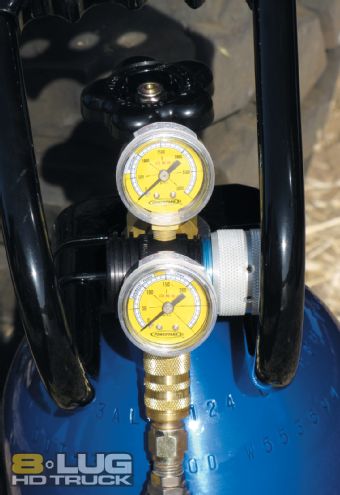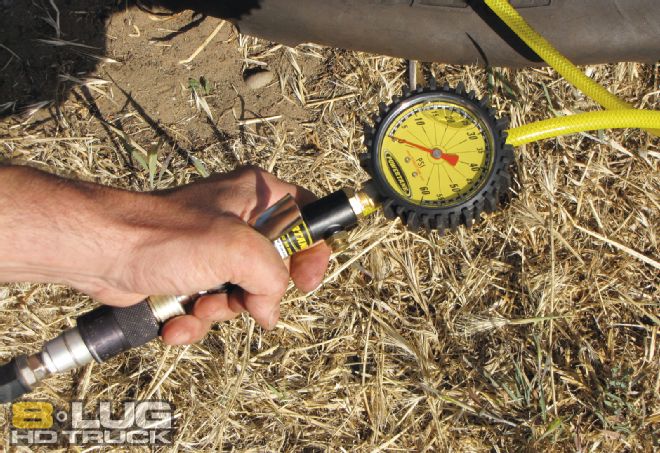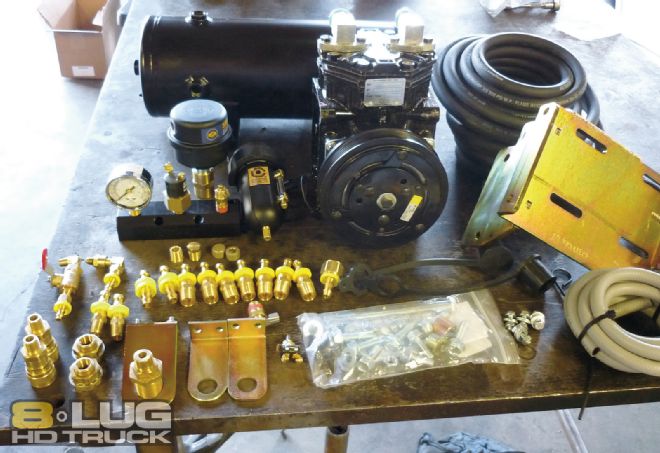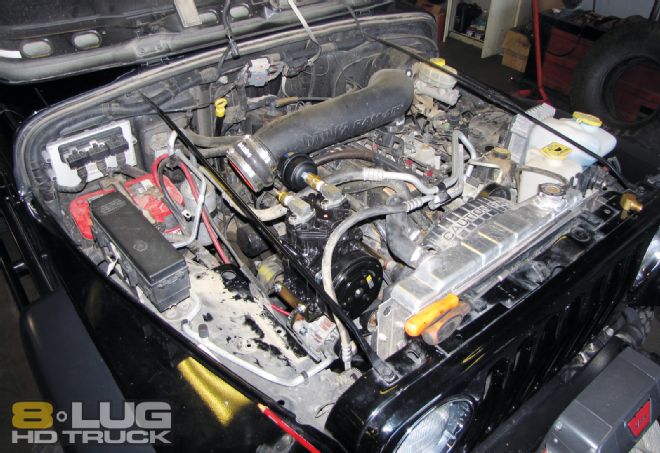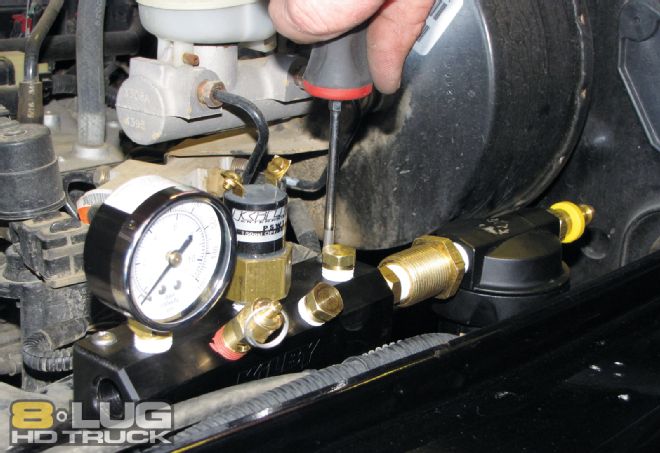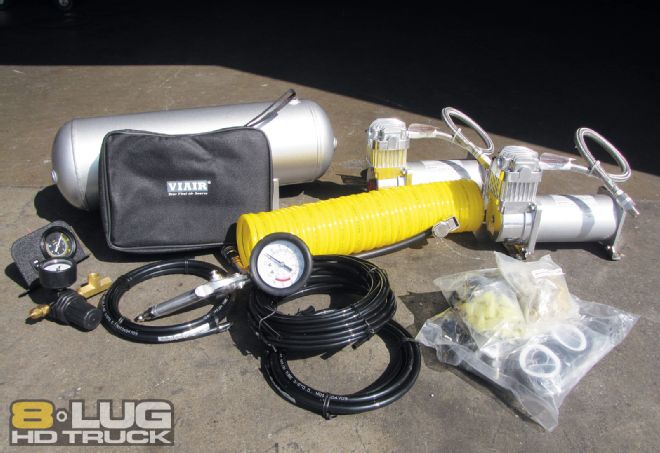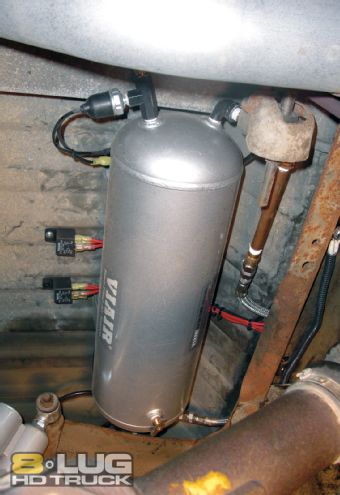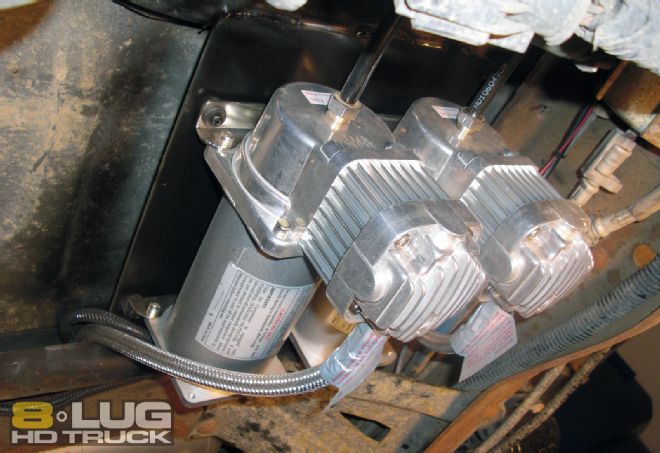Air Source Alternatives - Airing Up
Airing down your rig's tires is probably one of the first courses of action when entering an off-road area, but what do you do once it's time to hit the pavement again? You'll need an air source, and the $10 cigarette lighter-plugged air compressor just isn't going to cut it for filling four big tires back up. You'll need a strong and readily available air source to get your tires back up to highway pressures, and there are a few ways that seem to be more popular than others. Whether you're running a refillable carbon dioxide ( CO2 ) tank, an electric air compressor, or a belt-driven compressor, you'll be much better off than the guy with the bicycle pump and too much time on his hands.
CO2 Tank
CO2 tanks are powerful, versatile, and portable. Power Tank (www.powertank.com) makes practical tank sizes ranging from 5 to 20 pounds of CO2, with total weights ranging from roughly 20 to 50 pounds when completely filled. All Power Tanks come with brackets that keep the tank from bouncing around your truck when off-road, and you can leave them mounted in the vehicle and use a coiled air hose to reach all corners of the vehicle. When the tanks are completely charged with CO2, they are at very high pressures, making them perfect for running air tools as well as performing tasks like resetting the bead of a tire. By using CO2, you get roughly three times the volume when compared to a similar mass of nitrogen (the air you breathe is around 79 percent nitrogen). Some people even use them to run Air Lockers in off-road vehicles with completely pneumatic switches. The only major downside of these tanks is that they run out and have to be refilled. And the problem isn't the small amount of money you'll be spending to refill it at the local welding store—it's mainly an issue of whether or not you are mindful enough to fill it up before taking that long trip through the desert.
Electric Air Compressor
Air compressors are a great addition to many rigs. Assuming there are no major failures, the compressor will supply endless amounts of air for whatever you need. Plumbing the compressor to an auxiliary air tank makes filling duties that much quicker and allows the compressor to remain off for small tasks like pressurizing Air Lockers. Most electric air compressors are designed to be small and mount under the hood of the vehicle or on the frame somewhere. They are generally sealed and maintenance-free. Air from an electric compressor is a renewable resource, which draws a lot of people in—however, it also has drawbacks. First of all, the bigger the electric compressor, the larger the amperage draw, and they can draw a lot of amps! Electric compressors also produce lower flow ratings and pressures around 2 cfm at 30 psi and have lower duty cycles. This limits their use to filling tires and running Air Lockers. Air tools are probably out of the question, unless you have some ultimate twin-compressor constant-duty setup. This dual compressor system (pictured) from Viair (www.viaircorp.com) minimizes the lag time waiting for the air tank to fill up by putting two heavy-duty compressors on the same switch to fill the air tank twice as fast as a single unit could.
Belt-Driven Compressor
If electric compressors aren't your thing, you might prefer a York compressor, which is powered by the accessory drive belt on your engine. They are very similar to your truck's A/C compressor and can continuously power air tools without straining the system. While an A/C compressor uses the Freon in the system for lubrication, these York compressors have internal oil reservoirs that are filled with 30W oil. Kilby Enterprises has a major share of the belt-driven market with its Airboss kits. These kits are York compressor setups designed for a variety of Jeeps, Dodges, and Chevys with or without factory A/C systems. Assuming your engine is running, their continuous production of high-flow rates and pressures ensure you will always have the air you need to get the job done. These systems do have their weaknesses, though. With a belt-driven system, you'll have more stuff under the hood bolted onto your accessory drive. And unless the vehicle is running, you won't be able to use the air supply with a belt-driven system.
